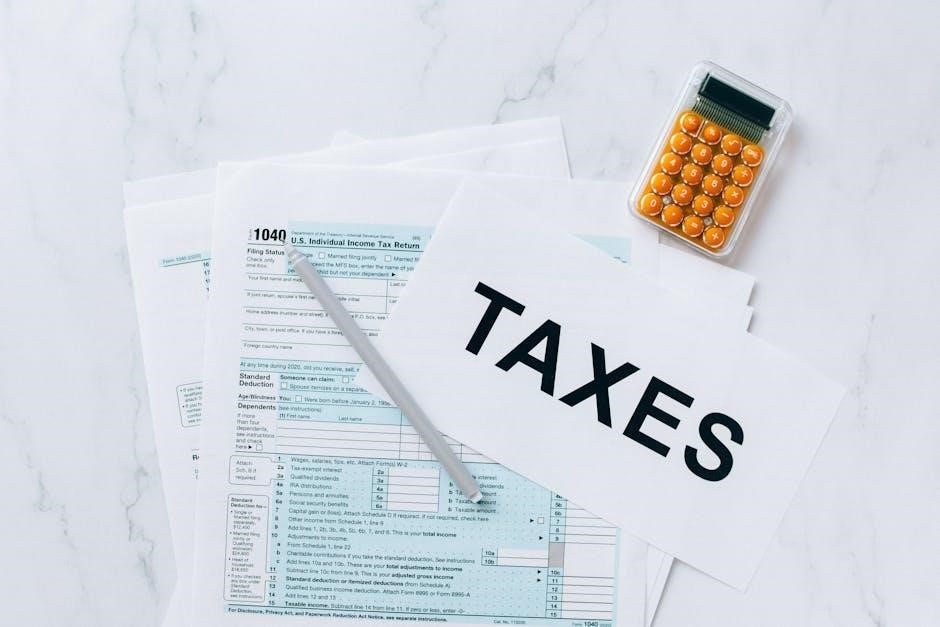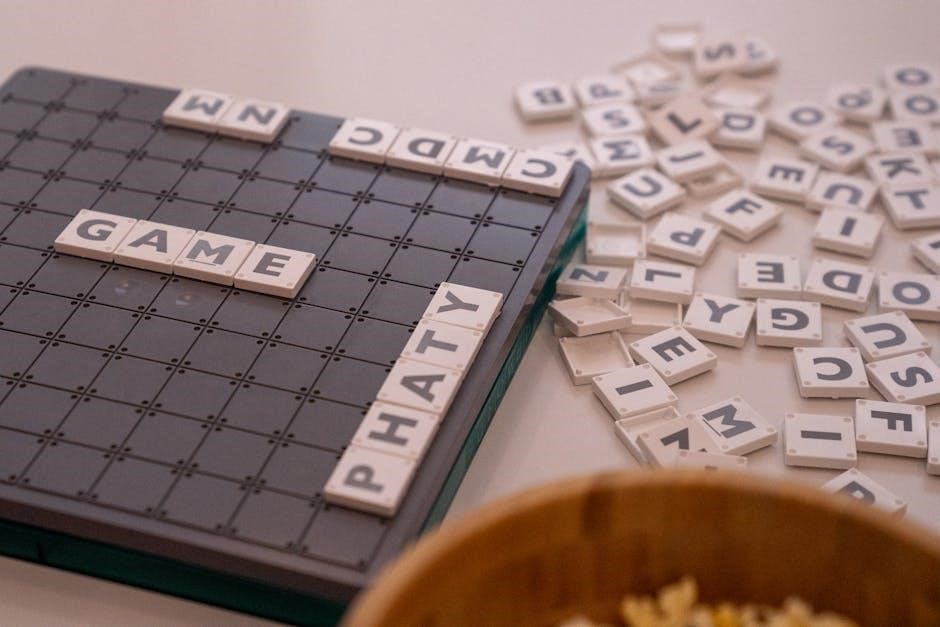year 4 spelling words pdf
The Year 4 Spelling Words PDF is a comprehensive resource designed to help students master spelling skills. It aligns with the national curriculum, covering statutory lists, common exception words, and tricky spellings. The PDF is organized into weekly and termly lists, making it easy for teachers and parents to track progress. It includes engaging activities and reinforcement techniques to ensure effective learning. This tool supports independent practice and classroom instruction, fostering confidence and fluency in spelling for Year 4 students.
Overview of Year 4 Spelling Curriculum
The Year 4 spelling curriculum is designed to build foundational skills in literacy, focusing on statutory spellings, common exception words, and tricky spellings. It introduces students to more complex word patterns, including prefixes, suffixes, and pluralization rules. The curriculum is structured to gradually develop spelling accuracy and confidence, aligning with national standards. Students are expected to master a range of words, including those from the Year 3/4 statutory list, such as accidentally, address, and believe. The curriculum also emphasizes the application of spelling skills in writing, fostering a deeper understanding of word meanings and usage. Regular practice and reinforcement are key to helping students progress throughout the year.
Importance of Spelling Lists for Year 4 Students
Spelling lists are a crucial tool for Year 4 students, providing a structured approach to mastering essential words. They help students develop accuracy, confidence, and fluency in spelling, which are foundational skills for literacy. Regular practice with spelling lists enables students to recognize patterns, understand word meanings, and apply spelling rules effectively. These lists also include common exception words and tricky spellings, which are often challenging for students to learn. By focusing on these targeted words, students can improve their writing quality and communication skills. Spelling lists further support independent learning and home practice, reinforcing classroom teaching and ensuring consistent progress throughout the year.

Structure of the Year 4 Spelling Words PDF
The PDF is organized into weekly and termly spelling lists, covering common exception words, tricky spellings, and words with prefixes/suffixes. It provides a clear, progressive structure to support learning and teaching.
Weekly Spelling Lists
The Year 4 Spelling Words PDF features structured weekly spelling lists, providing students with a manageable and progressive approach to learning. Each week focuses on specific spelling patterns, such as suffixes like -ous or prefixes like il-, im-, and ir-. Words like arrive, believe, and address are included to reinforce common exception words and tricky spellings. The lists are designed to align with the national curriculum, ensuring students build foundational skills. Weekly reviews and practice exercises help consolidate learning, while the organization allows teachers and parents to track progress effectively. This systematic approach ensures students gain confidence and fluency in spelling throughout the year.

Termly Breakdown of Spelling Words
The Year 4 Spelling Words PDF is divided into termly breakdowns, ensuring a balanced distribution of spelling words throughout the academic year. Each term focuses on specific spelling objectives, such as the use of prefixes, suffixes, and common exception words. The autumn term introduces foundational skills, covering words like accidentally and actual. Spring and summer terms build on these skills, incorporating more complex patterns and tricky spellings. This structured approach allows teachers to plan lessons effectively and students to gradually master more challenging words. The termly breakdown complements weekly spelling lists, providing a clear and organized path for spelling development in Year 4.
Common Exception Words
Common Exception Words are a crucial part of the Year 4 spelling curriculum, as they are non-patterned and must be learned by memory. These words, such as accidentally, address, and believe, are frequently used in writing but do not follow standard spelling rules. The Year 4 Spelling Words PDF includes dedicated sections for these words, ensuring students can identify and spell them correctly. These words are highlighted throughout the document and are often revisited in weekly and termly spelling lists. By mastering Common Exception Words, students build a stronger foundation for accurate and confident writing. The PDF provides targeted activities and reinforcement techniques to help students memorize these tricky spellings effectively.

Key Features of the Year 4 Spelling Words PDF
The Year 4 Spelling Words PDF is a comprehensive resource aligned with the national curriculum. It includes weekly and termly spelling lists, common exception words, and tricky spellings. The PDF offers interactive activities and spelling games to engage students, along with reinforcement techniques to ensure retention and fluency. Its organized structure makes it easy for teachers and parents to support learning at home or in the classroom.
Tricky and Exception Words
The Year 4 Spelling Words PDF places a strong emphasis on tricky and exception words that do not follow standard spelling rules. These words, such as “accidentally,” “address,” and “believe,” are explicitly highlighted to ensure students master them. The PDF categorizes these words into dedicated sections, allowing for focused practice and review. Techniques like mnemonics and repetition are suggested to help students remember these challenging spellings. Regular quizzes and activities are included to reinforce learning and build confidence. By addressing these tricky and exception words head-on, the resource equips students with the skills to handle complex spellings effectively, making it an invaluable tool for both classroom and home use. This focused approach ensures that students can tackle even the most difficult words with accuracy and fluency.
Words with Prefixes and Suffixes
The Year 4 Spelling Words PDF dedicates a section to words with prefixes and suffixes, a crucial skill for expanding vocabulary. Students learn to identify and apply common prefixes like un-, re-, and il-, as well as suffixes such as -ful, -less, and -ly. The resource provides lists of words that combine these elements, such as illegal or happiness, along with exercises to practice their usage. Activities encourage students to create new words by adding prefixes and suffixes to root words, enhancing their understanding of word structure. This section also includes tips for teachers to integrate these concepts into daily lessons, ensuring students can decode and spell complex words with confidence. By mastering prefixes and suffixes, students develop a stronger foundation for spelling and vocabulary growth.
Pluralization Rules
The Year 4 Spelling Words PDF includes a focus on pluralization rules, essential for accurate spelling. Students learn to add -s or -es to nouns, such as cat → cats and box → boxes. The resource covers irregular plurals, like tooth → teeth and man → men, and exceptions, such as words ending in -y (city → cities) or -is (crisis → crises). Activities help students practice applying these rules, with exercises that mix regular and irregular plurals. This section reinforces understanding of word patterns, enabling students to spell plural forms confidently. The PDF also includes tips for teachers to address common mistakes, ensuring students grasp these rules thoroughly. By mastering pluralization, students improve their spelling accuracy and vocabulary skills.

Teaching Strategies Using the PDF
The Year 4 Spelling Words PDF offers engaging activities, spelling games, and multi-sensory techniques to make learning interactive and fun while reinforcing spelling skills effectively.
Interactive Activities
The Year 4 Spelling Words PDF includes a variety of interactive activities to engage students and make spelling practice enjoyable. These activities are designed to cater to different learning styles, ensuring that every child can participate actively. For instance, slides showcasing individual words from the spelling list help students focus on one word at a time, fostering better retention. Quizzes and puzzles incorporated into the PDF encourage competitive and collaborative learning. Additionally, hands-on tasks, such as writing words in sand or using magnetic letters, provide a tactile approach to spelling practice. These activities not only make learning fun but also reinforce spelling patterns, tricky words, and exception rules. By integrating these interactive elements, the PDF helps students develop a strong foundation in spelling while keeping them motivated and eager to learn.
Spelling Games
Spelling games within the Year 4 Spelling Words PDF are designed to make learning interactive and fun. Activities such as crossword puzzles, word searches, and spelling bingo help students engage with the material in a playful way. These games often focus on common exception words and tricky spellings, reinforcing students’ understanding of complex patterns. For example, matching games where students pair words with their meanings or pictures can enhance retention. Additionally, timed spelling races and team-based challenges encourage healthy competition and collaboration. These games are aligned with the national curriculum and cater to different learning styles, ensuring that every student can enjoy practicing their spelling skills. By integrating play with learning, the PDF makes spelling practice an enjoyable experience for Year 4 students.
Reinforcement Techniques
Reinforcement techniques in the Year 4 Spelling Words PDF ensure long-term retention of spelling skills. Strategies include repetitive practice, tracing words, and creating flashcards. Students can write words in sand or shaving cream for tactile learning. Mnemonics and rhymes help memorize tricky spellings, while reading aloud reinforces recognition. Teachers often use word-building exercises, where students create new words from given roots. Writing sentences with targeted words improves context-based spelling. Regular quizzes and peer testing motivate learners to practice consistently. These techniques cater to diverse learning styles, making spelling practice engaging and effective. By reinforcing spelling skills through varied methods, the PDF helps Year 4 students build confidence and accuracy in their writing.

Resources and Support
The Year 4 Spelling Words PDF offers free downloads, additional worksheets, and online tools to enhance learning; These resources provide comprehensive support for teachers, parents, and students.
Free Year 4 Spelling Words PDF Downloads
Free Year 4 Spelling Words PDF downloads are widely available online, offering 700+ words aligned with the national curriculum. These resources include common exception words, tricky spellings, and terms with prefixes and suffixes. Designed for teachers and parents, they provide structured weekly and termly lists. The PDFs often come with answer sheets and activity ideas to engage students. They cover statutory spelling lists and additional vocabulary to support Year 4 learners. These downloadable materials are ideal for classroom use or home practice, ensuring consistent spelling practice. They are easily accessible and user-friendly, making spelling practice convenient and effective for all.
Additional Worksheets
Additional worksheets complement the Year 4 Spelling Words PDF, offering targeted practice for tricky spellings, common exception words, and terms with prefixes and suffixes. These worksheets provide varied activities such as word searches, crossword puzzles, and fill-in-the-blanks to reinforce spelling skills. They are designed to cater to different learning styles, ensuring engagement and understanding. Many worksheets include answer sheets for easy marking, while others focus on creative writing tasks to apply spelling knowledge in context. These supplementary resources are ideal for reinforcing classroom learning or providing extra practice at home. They align with the national curriculum, covering statutory spelling lists and beyond, to support Year 4 students in achieving spelling mastery.
Online Tools for Practice
Online tools offer interactive and engaging ways for Year 4 students to practice spelling. Websites and apps provide games, quizzes, and multimedia resources that make learning fun. Many tools feature spelling lists tailored to the national curriculum, including statutory words and common exceptions. Interactive activities such as word searches, crossword puzzles, and audio-visual aids help reinforce spelling patterns. Some platforms allow students to track progress and identify areas needing improvement. These tools cater to different learning styles, with visual, auditory, and kinesthetic approaches. They are accessible from home or school, supporting both independent and guided learning. By integrating technology, online tools make spelling practice dynamic and effective, helping Year 4 students build confidence and mastery of spelling skills.
The Year 4 Spelling Words PDF is a valuable resource for mastering spelling, building confidence, and fluency. It supports educators and parents in fostering effective learning.
Benefits of Using the Year 4 Spelling Words PDF
The Year 4 Spelling Words PDF offers numerous benefits, including a structured approach to learning and reinforcing spelling skills. It provides a clear and organized format, making it easier for students to track their progress. The inclusion of common exception words, tricky spellings, and words with prefixes and suffixes ensures comprehensive coverage of the curriculum. Teachers and parents can use the resource to create engaging lessons and activities, promoting active learning. Additionally, the PDF supports independent practice, allowing students to review and master spelling lists at their own pace. Regular use of this resource can improve spelling accuracy, boost confidence, and prepare students for future academic challenges. It is a versatile and effective tool for fostering literacy skills in Year 4 students.
Encouraging Independent Learning
The Year 4 Spelling Words PDF is an excellent tool for fostering independent learning. By providing a structured and organized approach, it allows students to take ownership of their spelling practice. The resource includes clear lists and activities that students can complete on their own, helping them develop self-directed learning skills. Weekly spelling lists enable students to review and practice words at home, reinforcing classroom learning. The PDF also includes interactive elements and challenging words to keep students engaged. Regular practice with the PDF helps build confidence and fluency in spelling, equipping students with the skills they need to tackle more complex texts independently. This resource is designed to empower students to become proactive learners, preparing them for future academic success.

Appendix
The Appendix provides supplementary materials, including sample spelling lists and a glossary of spelling terms, to support teaching and learning with the Year 4 Spelling Words PDF.
Sample Spelling List
A sample spelling list is included in the Appendix to provide a preview of the types of words covered in the Year 4 Spelling Words PDF. These words are selected from the statutory spelling list and include both common exception words and tricky spellings. For example, words like accidentally, address, and arrive are highlighted as key spellings for Year 4 students. The list also features words that require understanding of prefixes and suffixes, such as illegal and impossible. This sample list helps teachers and parents understand the structure and content of the full PDF, ensuring it aligns with curriculum expectations; It also serves as a quick reference for reinforcing spelling practice at home or in the classroom.
Glossary of Spelling Terms
This glossary provides definitions for key spelling terms used in the Year 4 Spelling Words PDF. Statutory words are those prescribed by the national curriculum, ensuring consistency in spelling education. Common exception words are high-frequency words that do not follow standard spelling rules, such as “because” or “friend.” Tricky words are similar but may appear less frequently, requiring extra practice. Prefixes and suffixes are letters added to the beginning or end of roots to form new words, like “un-” in “unhappy” or “-ful” in “hopeful.” Pluralization rules explain how to form plurals, such as adding “-s” or “-es.” This glossary helps students, parents, and teachers understand spelling terminology, fostering clarity and effective learning.